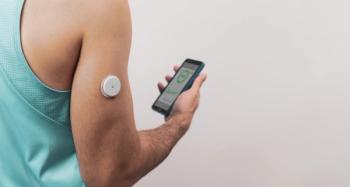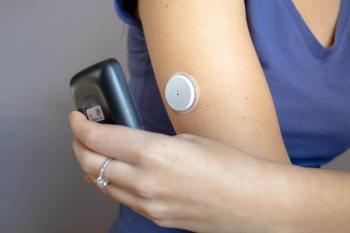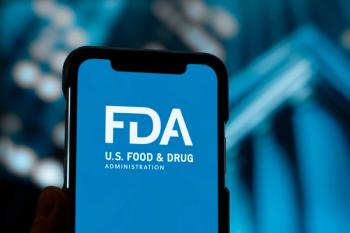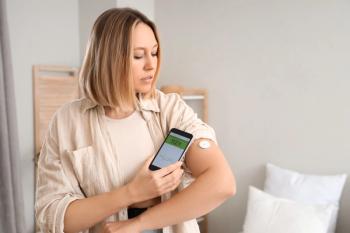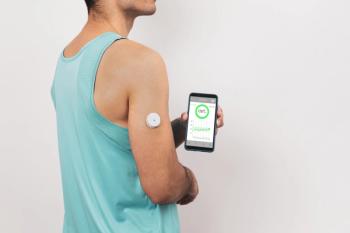
CGM Associated With Improved Glycemic Control in Cystic Fibrosis-Related Diabetes
The use of continuous glucose monitoring may improve outcomes in patients with cystic fibrosis-related diabetes.
The use of continuous glucose monitoring (CGM) in cystic fibrosis-related diabetes (CFRD) may be linked to improved glycemic control compared with standard care with self-monitoring of blood glucose (SMBG), according to results of a systematic review published in the Journal of Cystic Fibrosis.1
Nearly half of patients with cystic fibrosis may present with CFRD, which has been associated with a lower baseline lung function, more rapid pulmonary decline, changes in lung microbiome, prolonged pulmonary exacerbations, and increased mortality. As the leading underlying pathophysiology of CFRD is insulin deficiency, insulin therapy in this patient group can have many benefits. However, the tabulation and management of insulin therapy in this patient population can be challenging.
The use of CGM in patients with type 1 diabetes mellitus (T1DM) has shown to improve glycemic control, increase hypoglycemic confidence, and reduce distress in patients with T1DM; however, whether these results can be transferred to patients with CFRD is unclear.
A team of investigators in Australia conducted a systematic review and meta-analysis to better understand the benefits of CGM in patients with CFRD. The primary outcome of the study analyzed the current evidence of CGM (intervention) compared with SMBG (standard care) in managing patients with CFRD to determine whether the use of CGM improves glycemic control, which was measured by longitudinal chance in plasma glycated hemoglobin (HbA1c) at follow-up. The secondary outcomes evaluated the relation between CGM metrics and pulmonary and nonpulmonary outcomes in patients with CFRD, assessed quality of life outcomes, and addressed gaps in evidence or where more research may be required.
A total of 24 studies met the investigation criteria: 11 evaluated CGM and 13 evaluated SMBG. Of the total, 17 were used in the meta-analysis and 12 were included in the qualitative synthesis, which reported pulmonary, nonpulmonary, or consumer satisfaction and quality of life outcomes. Of note, none of the identified studies were randomized controlled studies that assessed the glycemic effects of CGM vs SMBG in patients with CFRD.
The mean follow-up period across analyses was 21.2 months (CGM group 5.9 ± 2.9 months vs SMBG 31.8 ± 61.9 months, P =.24). The CGM group had significantly higher baseline HbA1c compared with the SMBG group (P =.007). The most commonly used CGM device was the Freestyle Libre device.
The weighted mean difference in HbA1c from baseline to follow-up were -3.9 mmol/mol for CGM (P <.0001) and 3.0 mmol/mol with SMBG (P =.93). The primary outcome results suggested that HbA1c was reduced in the CGM groups compared with SMBG groups with an overall weighted mean difference HbA1c of 4.1 mmol/mol lower in the CGM groups than the SMBG groups (P =.034).
A large number of studies had co-interventions and/or retrospective designs, which lead the investigators to grade these studies as being “serious to critical risk of bias.” The researchers also used Egger’s test for small-study effects and found evidence of publication bias as well (P =.014).
Secondary analyses measuring pulmonary outcomes in one of the studies found that there was an overall reduction in forced expiratory volume in 1 second (FEV1) of 4% during the follow-up period in 7 patients with CFRD who were using CGM. Results of another study found that there was an overall improvement in FEV1 by 8.4% in 78% of their patient group (14 of 18 adults) with CFRD using CGM for glycemic control over a 12-month duration.
Of the studies that included non-pulmonary outcomes, only 2 studies using CGM with no co-interventions recorded changes in body mass index (BMI). The baseline BMI in these studies was 21.7 ± 2.2 kg/m2. One study reported mixed BMI outcomes in 5 of 7 patients with a 4% increase in BMI in 2 of 7 patients. Another study found that patients with CGM and aggressive insulin up-titration yielded 4.1% improvement in their body weight over 6 months. Another study found that the majority of their cohort (13 of 18; 72%) gained weight with a mean weight increase from 59 to 60 kg in 12 months.
One study reported consumer satisfaction with the Freestyle Libre device in which 88% of the cohort agreed or strongly agreed that the device was easy and comfortable to use; 98% of participants recommended CGM use and found the glucose trend arrows and scanning functions of the device very useful.
“Despite the detrimental effects of hyperglycemia in CFRD, evidence on CGM benefiting pulmonary and non-pulmonary outcomes in CFRD is lacking, together with consumer and clinician experiences,” the authors noted. “Future research should evaluate interrelationships between CGM metrics and disease-specific clinical outcomes to elucidate CGM targets based on pulmonary end-points and consider pragmatic approaches to contribute to the evidence-base in this field.”
Reference
1. Kumar S, Soldatos G, Ranasinha S, Teede H, Pallin M. Continuous glucose monitoring versus self-monitoring of blood glucose in the management of cystic fibrosis related diabetes: a systematic review and meta-analysis. J Cyst Fibros. 2023;22(1):39-49. doi:10.1016/j.jcf.2022.07.013
Newsletter
Pharmacy practice is always changing. Stay ahead of the curve with the Drug Topics newsletter and get the latest drug information, industry trends, and patient care tips.

